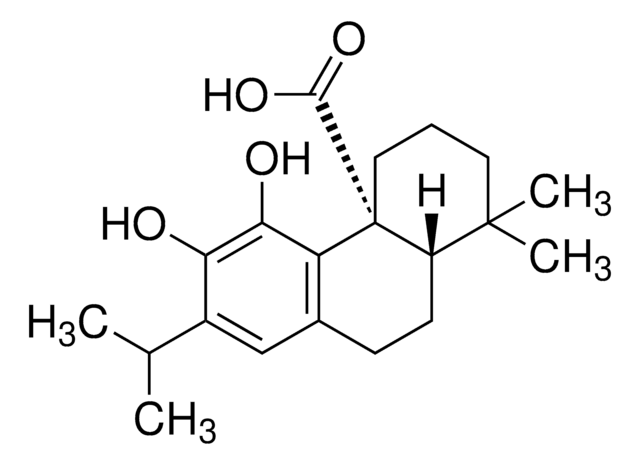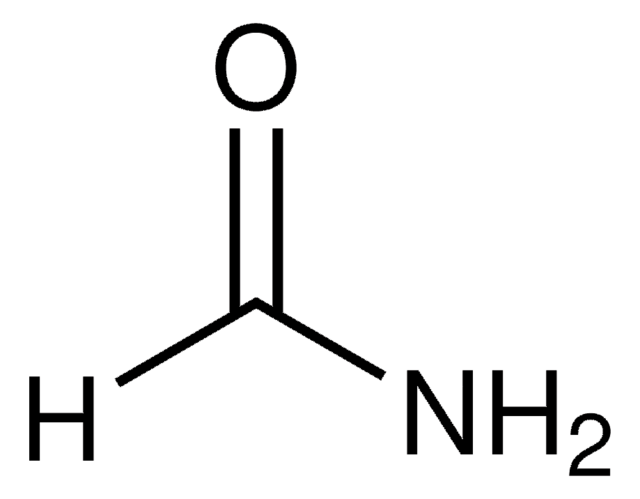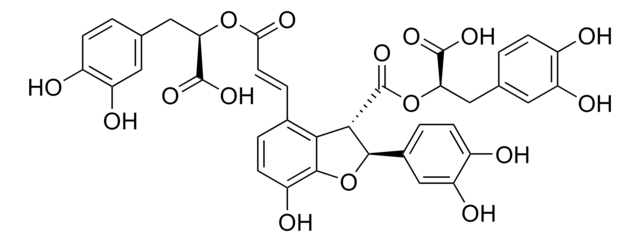R4033
Acide rosmarinique
≥98% (HPLC), from Rosemarinus officinalis L.
Synonyme(s) :
Acide (R)-O-(3,4-Dihydroxycinnamoyl)-3-(3,4- dihydroxyphényl)lactique, Ester (R)-1-carboxy-2-(3,4-dihydroxyphényl)éthylique d’acide 3,4-Dihydroxycinnamique
About This Item
Produits recommandés
Source biologique
Rosemarinus officinalis L.
Niveau de qualité
Essai
≥98% (HPLC)
Forme
powder
Conditions de stockage
protect from light
Couleur
white to faint beige
Pf
171-175 °C (lit.)
Solubilité
H2O: 1 mg/mL, clear, colorless
Application(s)
metabolomics
vitamins, nutraceuticals, and natural products
Température de stockage
2-8°C
Chaîne SMILES
OC(=O)[C@@H](Cc1ccc(O)c(O)c1)OC(=O)\C=C\c2ccc(O)c(O)c2
InChI
1S/C18H16O8/c19-12-4-1-10(7-14(12)21)3-6-17(23)26-16(18(24)25)9-11-2-5-13(20)15(22)8-11/h1-8,16,19-22H,9H2,(H,24,25)/b6-3+/t16-/m1/s1
Clé InChI
DOUMFZQKYFQNTF-WUTVXBCWSA-N
Vous recherchez des produits similaires ? Visite Guide de comparaison des produits
Description générale
Application
- to see its protective effects on the human endothelial cell line (EA.hy926) to treat diabetic atherosclerosis
- to test its effect in 1-Methyl-4-phenyl-1, 2, 3, 6-tetrahydropyridine (MPTP) induced Parkinson′s disease (PD) models on attenuating inflammatory responses and microglia activation
- to test its neuroprotective effects on dopaminergic neurons
- to test its effects on sperm motility, viability and on intracellular calcium ion concentration
- as a reference standard in capillary zone electrophoresis (CZE) method
Actions biochimiques/physiologiques
Code de la classe de stockage
11 - Combustible Solids
Classe de danger pour l'eau (WGK)
WGK 3
Point d'éclair (°F)
Not applicable
Point d'éclair (°C)
Not applicable
Faites votre choix parmi les versions les plus récentes :
Déjà en possession de ce produit ?
Retrouvez la documentation relative aux produits que vous avez récemment achetés dans la Bibliothèque de documents.
Les clients ont également consulté
Notre équipe de scientifiques dispose d'une expérience dans tous les secteurs de la recherche, notamment en sciences de la vie, science des matériaux, synthèse chimique, chromatographie, analyse et dans de nombreux autres domaines..
Contacter notre Service technique






